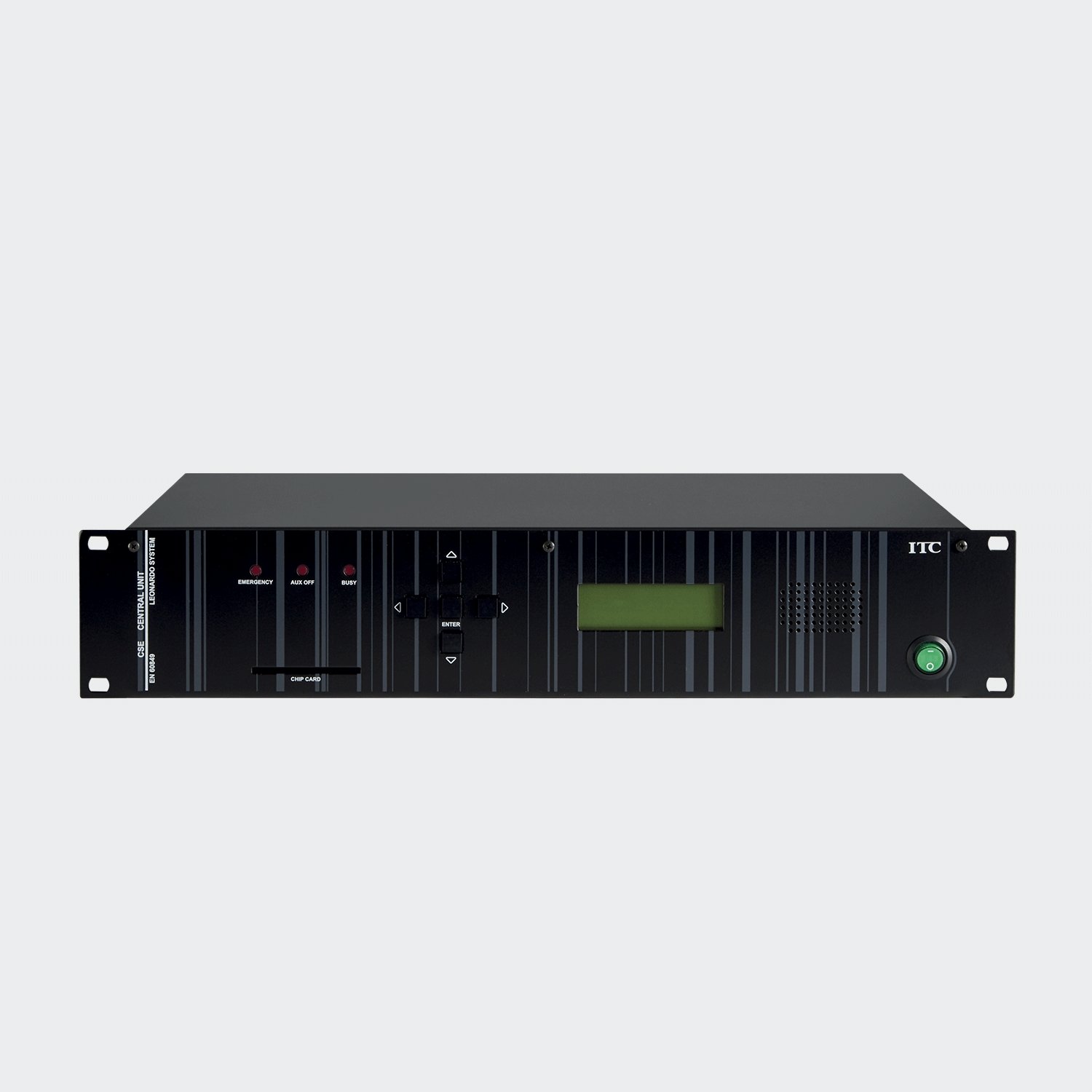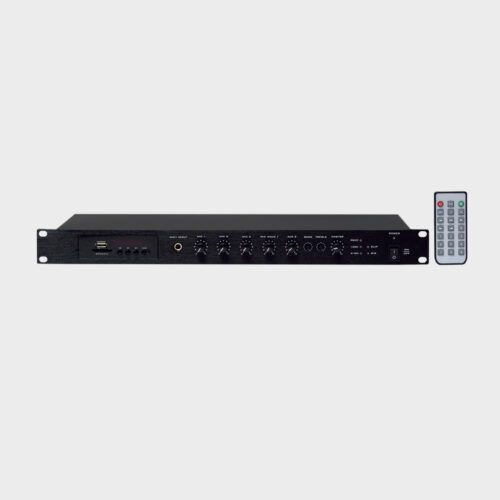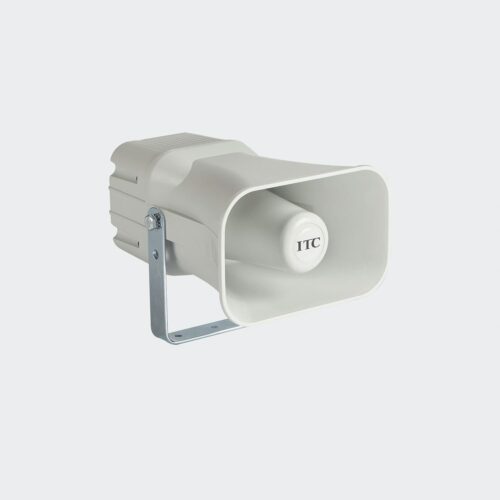The Central Unit is used to manage and control the components of the system and set the operation parameters. It communicates with the Switching Units and the Microphone Units for exchanging of data and audio signals. The Central Unit is provided with a backlit LCD to display system functions and parameters, 5 functional keys to scroll the menus and set operational parameters, a chip-card reader to protect the access to the configuration parameters, 3 led lights for immediate status display of main functions, RJ12 double socket for connecting the remote microphone units, RJ45 priority input for the emergency microphone unit, 2 RCA audio inputs for external sound sources (Tuner, CD, etc.), 1 RCA audio input for an external message source (commercials, jingles, advertising), 1 built-in pre-recorded message sound card, 1 RS232 serial port for connection to PC or serial printer, 6 inputs for remote alarm activation. The access to the system configuration menu can be protected by means of a chip card (Key-Card) with a univocal code, to avoid modifications by unauthorized persons. In addition to the 6 alarm inputs, another 92 “virtual” alarm inputs are available, which become “physical” when associated to the zone module inputs. “Virtual” inputs can be activated manually from the Central Unit front panel, from the emergency microphone unit or by means of a PC, when connected through the serial port.
The Central Unit is configured by means of a PC and the specific “SWL” software. The PC also works as a powerful additional remote control console and allows for continuous management and storage of events (alarms and fault messages). As an alternative, a serial printer can be used instead of the PC for immediate printing of the event in progress. Through the PC it is possible to define areas (an area is a group of zones), select one out of two background music sources for each zone or area, adjust volume for either music, voice and message, per each zone or area, and configure the alarm inputs in order to associate each input with a specific emergency message and a specific zone or area for broadcasting. Emergency messages are stored by default in a solid state memory, in compliance with the regulations, and cannot be altered by an external user. In case of system crash, or malfunctioning of the central unit, the digital will be by-passed and emergency announcements can be made manually from the emergency microphone unit. Suitable to rack installation: size 2 r.u.








